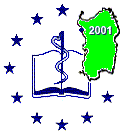 |
EBM
Guidelines - Unique collection of Evidence-based clinical guidelines for
daily clinical practice. An useful information tool for medical libraries
Leena Lodenius,
Ilkka Kunnamo
|
|
|
|
|
|
 |
The need of evaluated medical information, evidence-based medicine is increasing significantly all the time as the health care professionals, consumers, researchers, and policy makers are overwhelmed with unmanageable amounts of information. The popularity of the Cochrane Library has proved that health care professionals do need good reviews of the results of research for the decision-making and an easy access to this information. In Finland for more than 10 years ago the idea of a new international database EBM Guidelines emerged from the obvious need for a handbook discussing the diagnosis and treatment of the wide range of diseases and conditions encountered by the general practitioners and health care professionals in the hospitals. Thus EBM Guidelines is a valuable database in medical libraries. The Evidence-Based Medicine Guidelines collects, summarizes, and updates continuously the core clinical knowledge essential in general practice bringing the user the latest developments in clinical medicine. The EBM Guidelines is the most extensive collection of guidelines for primary care with more than 900 headings. The unique feature of the EBM Guidelines is that each guideline contains a concise summary of scientific evidence underlying the given treatment recommendations. The summaries, which are attached to the guidelines as hypertext links, are based on Cochrane reviews and DARE abstracts in the Cochrane Library, as well as on systematic reviews and original articles published in medical journals. Full-text versions of all cited Cochrane reviews are included on the CD-ROM.. The strength of the evidence presented in the summaries is graded from A to D and a short statement on the level of evidence is added to the summary. The evidence summaries allow the clinician to judge how well-founded the treatment recommendations are. EBM Guidelines is available on CD and on the Internet (http://www.ebm-guidelines.com). The database contains more than 900 problem-oriented and disease-specific guidelines with treatment recommendations based on scientific evidence, more than 1500 evidence summaries, hundreds of high-quality photographs, updates at 6-month intervals. Despite the extensiveness of the contents, the individual guidelines are concise and easy to read as they have been specifically structured to be read from a computer screen. The hypertext properties of the database make it easy to obtain more detailed information by links to other articles and to scientific evidence supporting the recommendations. EBM Guidelines offers the medical libraries a quick and easy way to find a vast amount of reliable updated information of diseases and conditions - often one search is enough to find the information needed. There are many products that provide evidence to be used as the basis for decision making, but there is no other comprehensive collection of primary care guidelines where the evidence is described and coded explicitly, with direct links to full-text Cochrane reviews. EBM Guidelines has a powerful retrieval software and a comprehensive thesaurus. Only one search term will give you all the information you need. The extremely quick retrieval software has been specifically developed for searching from medical databases and presenting the search results logically. The search program uses a thesaurus based on MeSH and the UMLS (Unified Medical Language System) of the National Library of Medicine. Search terms can be found by entering synonyms, and searches can be exploded according to the MeSH hierarchies. The EBM Guidelines are produced by an editorial team the members of which are experienced, practicing primary care physicians, most of whom have a PhD degree. They have also been trained in the critical appraisal of medical literature. The team works in close cooperation with about 20 specialist coordinators and 300 authors. EBM Guidelines is the result of more than 10 years systematic development. The program has been tested in daily clinical work by thousands of physicians and adjusted to the needs of the practising physician on the basis of feedback from the users. EBM Guidelines are currently available in English, Finnish and Estonian. Russian and Swedish language version are upcoming. |
|
|
|
|